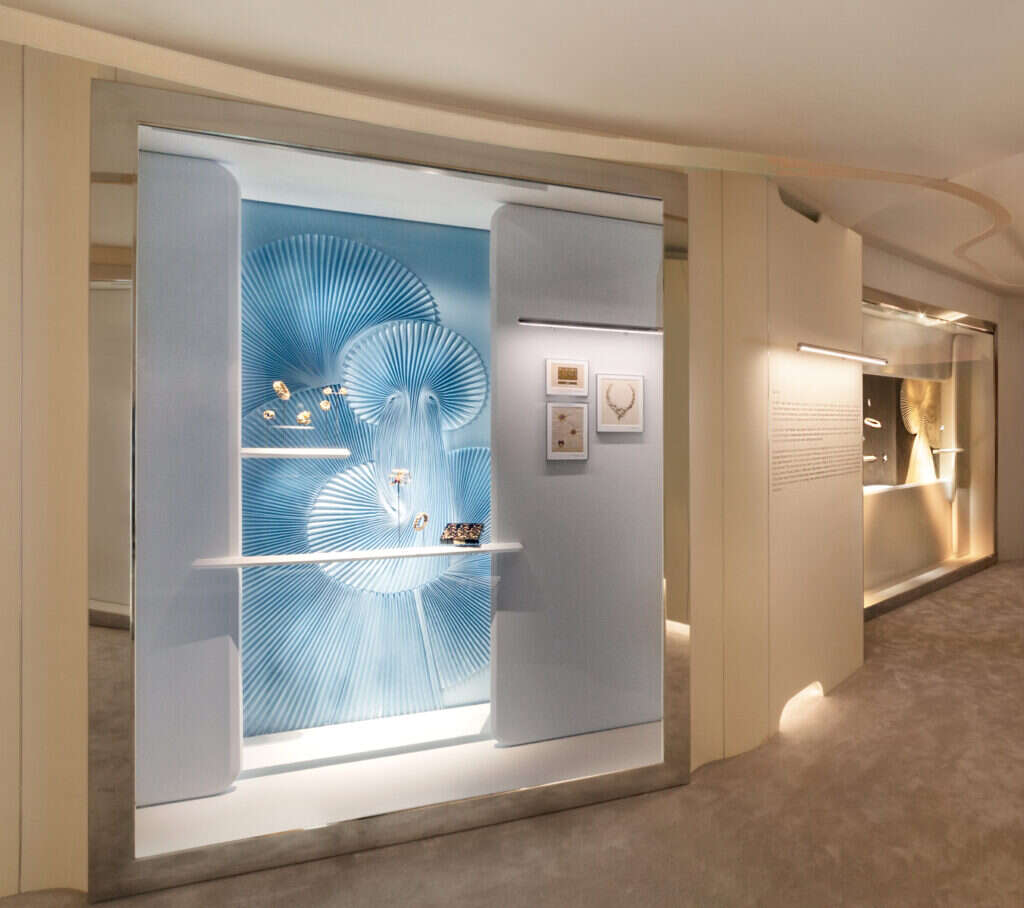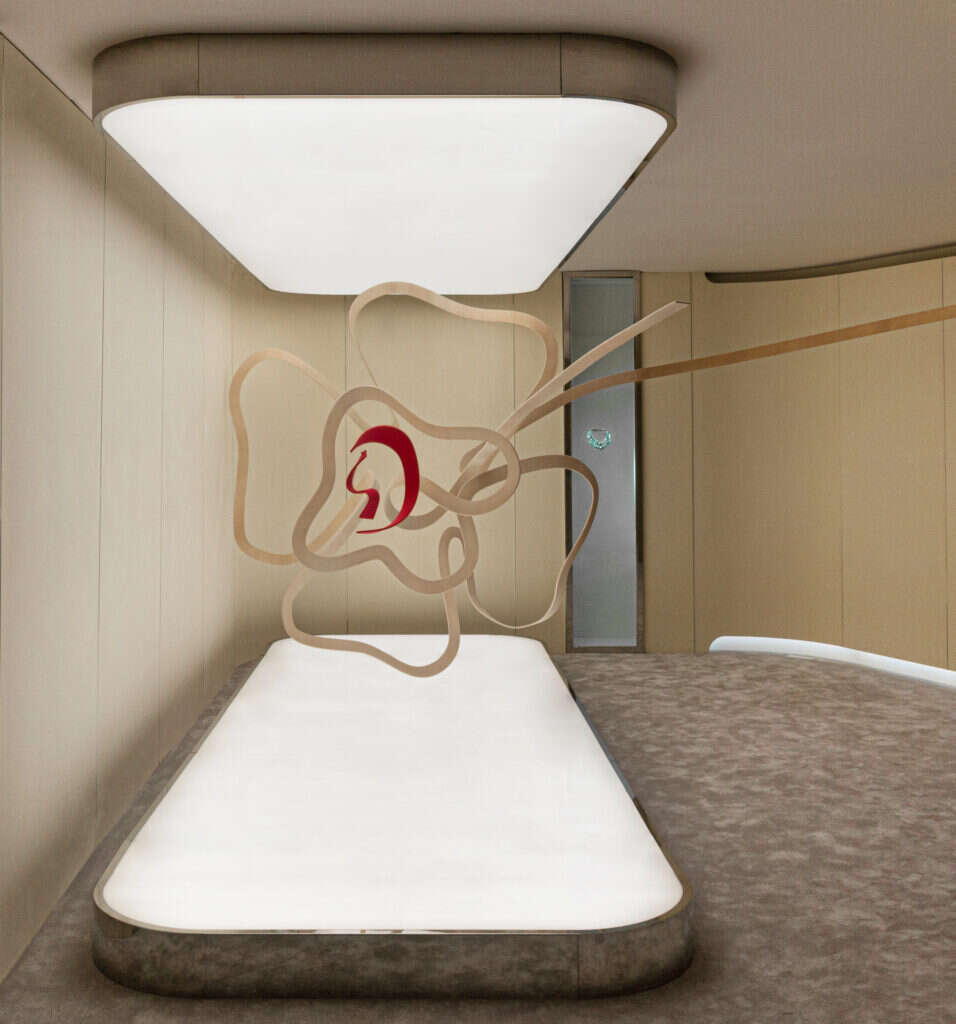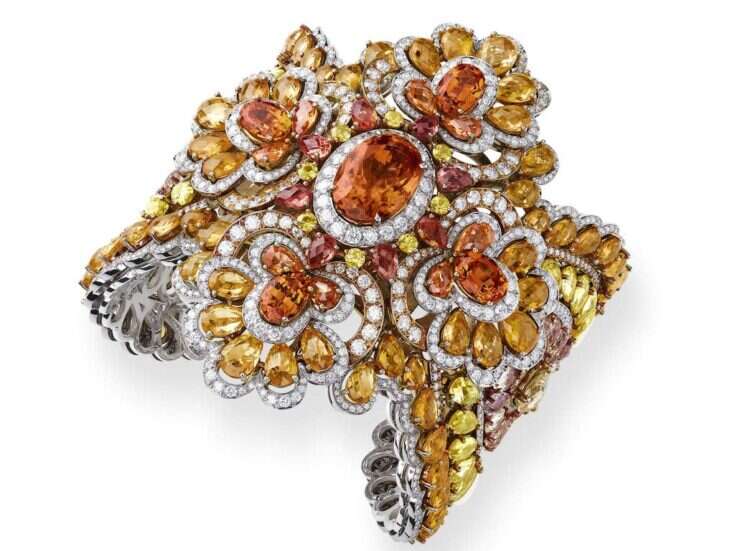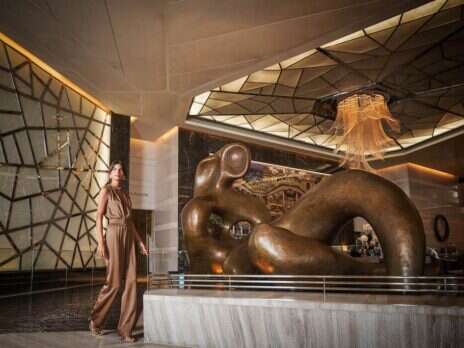
It’s a blustery morning in late September, and an utterly soaked High Street Kensington is devoid of its usual bustle of shoppers. Inside the Design Museum, however, the autumnal downpour is easily, happily ignored for the launch of the Van Cleef & Arpels The Art of Movement exhibition, open until October 20.
Founded in 1896, Van Cleef & Arpels is, indisputably, one of the most iconic luxury brands of the modern age and one of the most celebrated jewelers in history. The French company, beloved by the global fashion set and royalty alike, need no introduction; rather, it transpires, an exhibition.
“Jewelry is not only a category, but also a form of art,” stated Van Cleef & Arpels CEO, Nicholas Bos, as he opened the exhibition to much applause. Jewelry can be a “beautiful adornment,” he continued, “but also an art form.”
[See also: Jewelry Icons: Leaders of the Past and Future]

The exhibition is an endeavor to prove so. The Art of Movement places great care on illustrating both the creativity and craftsmanship that go into every piece of its statement jewelry, and the innovative technology behind the most minute detailing.
The exhibition hosts around 100 artifacts designed throughout the brand’s two-century-long history, and 30 original drawings too. This will “showcase how movement has been captured along four different themes: nature alive, elegance, dance, and abstraction,” says Van Cleef & Arpels’ head of patrimony, Lise McDonald. “There are many masterpieces in the exhibition, both from private loans and our patrimonial collection.”
McDonald has her favorites, including one that particularly stands out in the exhibition. A diamond, emerald and ruby-studded ballerina clip created in 1941, “showcases the grace of [the ballerina’s] movement holding a fan similarly to a Spanish dancer.”
A bell flowers clip from 1969, set in sapphire, is highlighted too, and the colorful piece is classic of the brand, in which flowers are a theme championed throughout their history.
“Another astonishing piece is the silhouette clip of 1937 between a lace stylized form of a bow and a flower,” McDonald continues. Discussing the vision of the jewelry house within 20th-century trends, she points out that the piece “epitomizes, in the middle of the modernist era, how the Maison was at the avant-garde of creation. Its bold design is strikingly modern even today.”
A union born of both love and skill, the brand was launched after Estelle Arpels, the daughter of a precious stones dealer, married Alfred Van Cleef, the son of a stonecutter, in 1895. The two newlyweds and their families combined their businesses when they opened their first boutique shop at 22 Place Vendome, Paris, across from the Hotel Ritz, in 1906.

The jewelry brand became a fast favorite with the international set, no doubt aided by the shop’s proximity to the Ritz. Already a global fixture of the luxury scene, 1939 saw the house create jewelry to be worn by Princess Fawzia of Egypt on her wedding day, and in 1956, Grace Kelly followed suit when Prince Rainer III gifted his bride a pearl and diamond ensemble specially designed by the French jewelers.
Yet it’s the decade of the 1930s that stands out for McDonald, as we discuss Van Cleef & Arpels’ illustrious history. “Every decade has had its specific characteristics and it is fascinating to see how the Maison has kept its identity throughout nearly 120 years of creations and yet gone beyond the spirit of a time,” she acknowledges.
But “certainly, the modern era in the 1930s has been a very prominent period for the Maison with Renée Puissant, the daughter of the founding couple, as artistic director. She was groundbreaking and dared new designs that certainly anchored the creations of Van Cleef & Arpels as one of the most important jewelry Maison. To name only a few: the cadenas watch; mystery set techniques; the ludo; the minaudiere. All were created during the 30s.”
[See also: Caroline Scheufele on a Sustainable Future for Luxury Jewelry]

The mystery set, a complex and intricate technique patented in 1933, is still used today, and is credited as being the winning formula behind Van Cleef & Arpels’ distinct style, in which precious stones can be set without any metal component visible. “No other jewelers have mastered this technique,” McDonald points out. “It requires very high skill and many years of transmissions.”
The effect is subtle and yet unmissable across all their pieces, especially when placed under the light of an exhibition display. It is the backbone, as Bos highlighted that morning, of Van Cleef & Arpels’ ability to transform precious stones into little pieces of art.
“The knowledge of past creations is extremely precious to help us shape today’s creations,” McDonald says. “Every creation of the Maison refers to its past; never by copying it, but by sourcing the inspiration and the roots of present creations. It is always a reinterpretation in a new spirit.”
Van Cleef & Arpels The Art of Movement exhibition is open at the Design Museum, London, until October 20.






